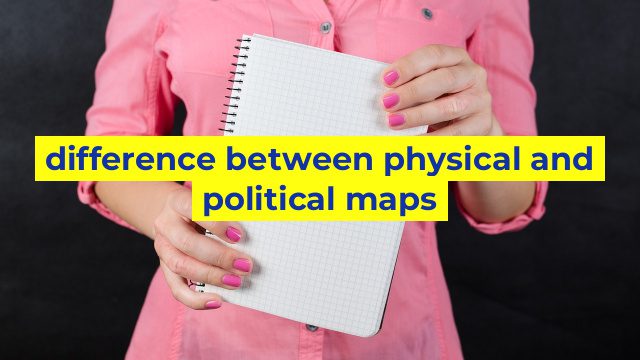The Difference Between Physical and Political Maps
Maps are essential tools that help us understand the world around us. They provide us with information on geographical features, topography, locations, and boundaries. There are different types of maps, but two of the most common are physical and political maps. These maps serve different purposes and help us understand different aspects of the world.
Physical Maps
Physical maps focus on the physical features of the earth’s surface. These maps show the natural features of an area, including mountains, rivers, lakes, deserts, and other natural landscapes. Physical maps use colors, shading, and other techniques to show relief, landforms, and elevation. They also indicate changes in the land’s surface, such as the movement of glaciers or volcanic eruptions. Physical maps are useful for geologists, environmentalists, and anyone interested in exploring the natural world.
Political Maps
On the other hand, political maps show the boundaries and territories of countries, states, and cities. They provide information about the political divisions of a territory, including borders, capitals, and major cities. Political maps are useful for politicians, historians, and people interested in studying the political and social structures of a country or region. These maps use different colors and symbols to show the boundaries of different political entities.
The Purpose of Physical and Political Maps
The main difference between physical and political maps is their purpose. Physical maps focus on the natural features of the earth, while political maps show the territorial divisions of a region. Physical maps are used for scientific research, exploring, and studying the natural world, while political maps are essential for understanding the political and social structures of a region. Knowing the difference between these two types of maps is essential for anyone interested in the geography and history of different regions of the world.
In conclusion, physical and political maps serve different purposes and help us understand different aspects of the world. While physical maps show natural features and landscapes, political maps provide information on political divisions and borders. Both types of maps are essential tools in the study of geography, history, and social sciences.
Table difference between physical and political maps
| Physical Maps | Political Maps |
|---|---|
| Shows physical features of a region or area, such as mountains, rivers, deserts, etc. | Shows political features of a region or area, such as boundaries, cities, countries, etc. |
| Highlights natural elements that shaped the landscape | Highlights man-made features that were created by humans |
| Use relief shading, contour lines, colors and symbols to show physical features | Use different colors, lines and shapes to show political features |
| Useful for understanding the topography and terrain of an area | Useful for understanding political boundaries, countries, and cities within a region |
| Examples: World physical maps, topographic maps, relief maps | Examples: World political maps, country maps, state/province maps |

